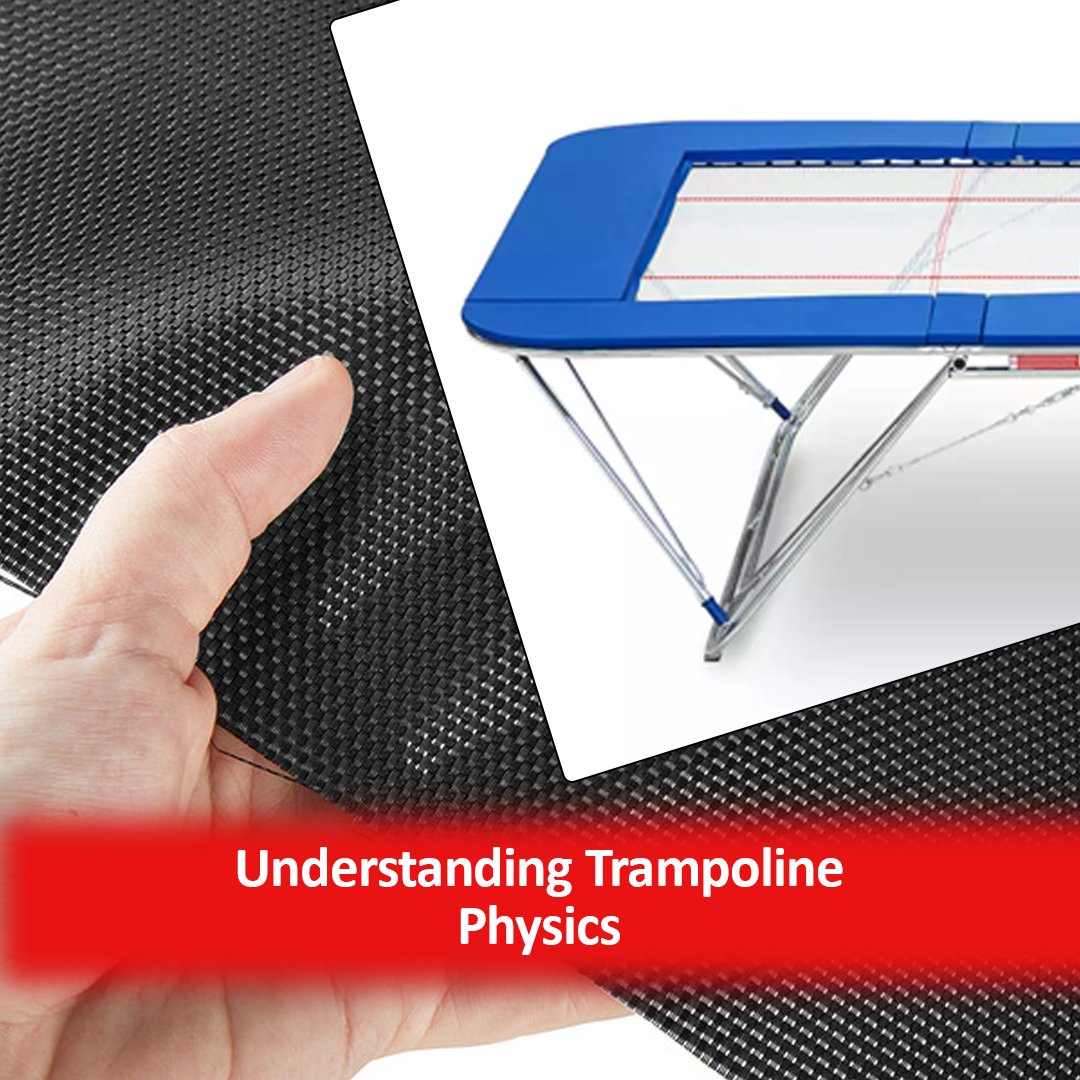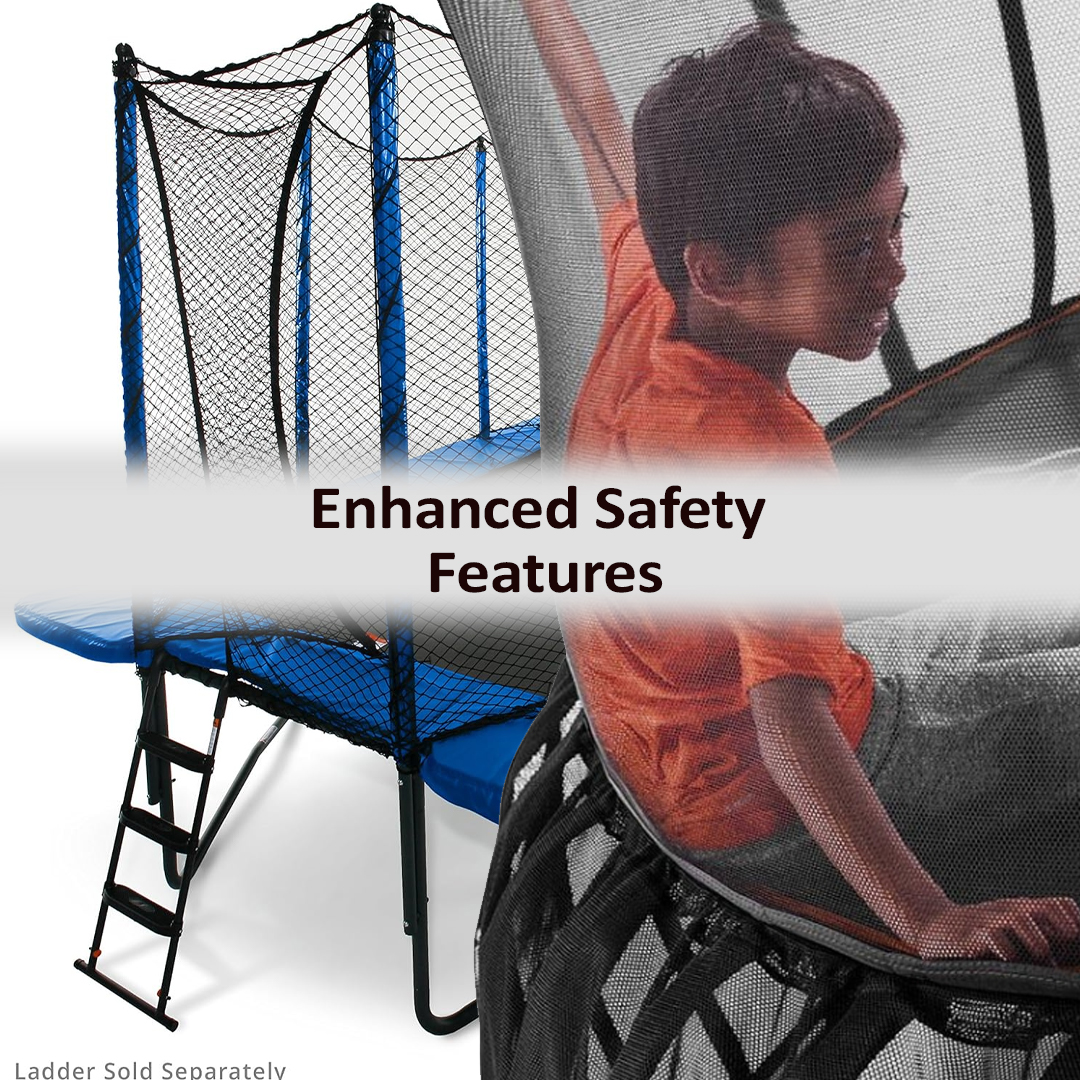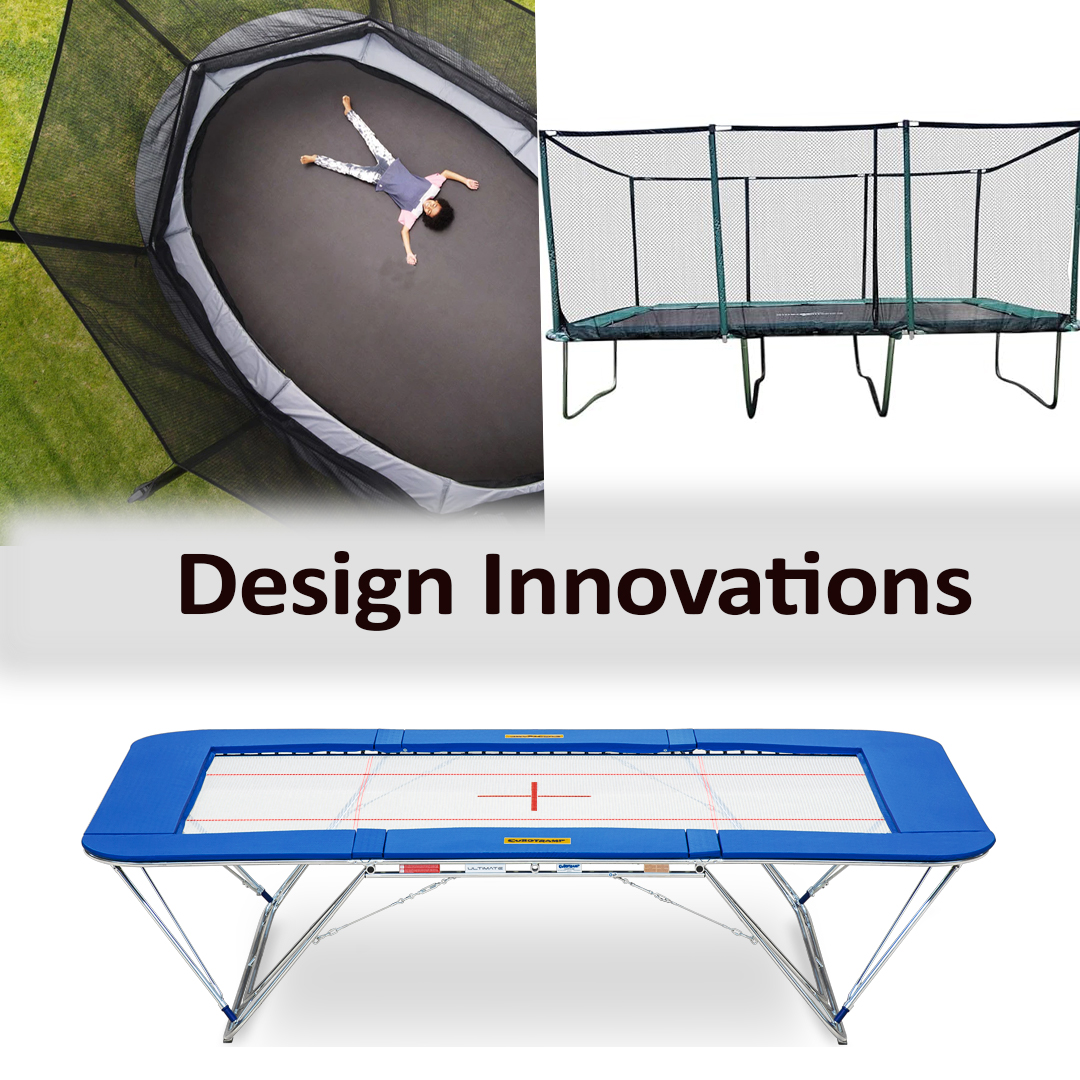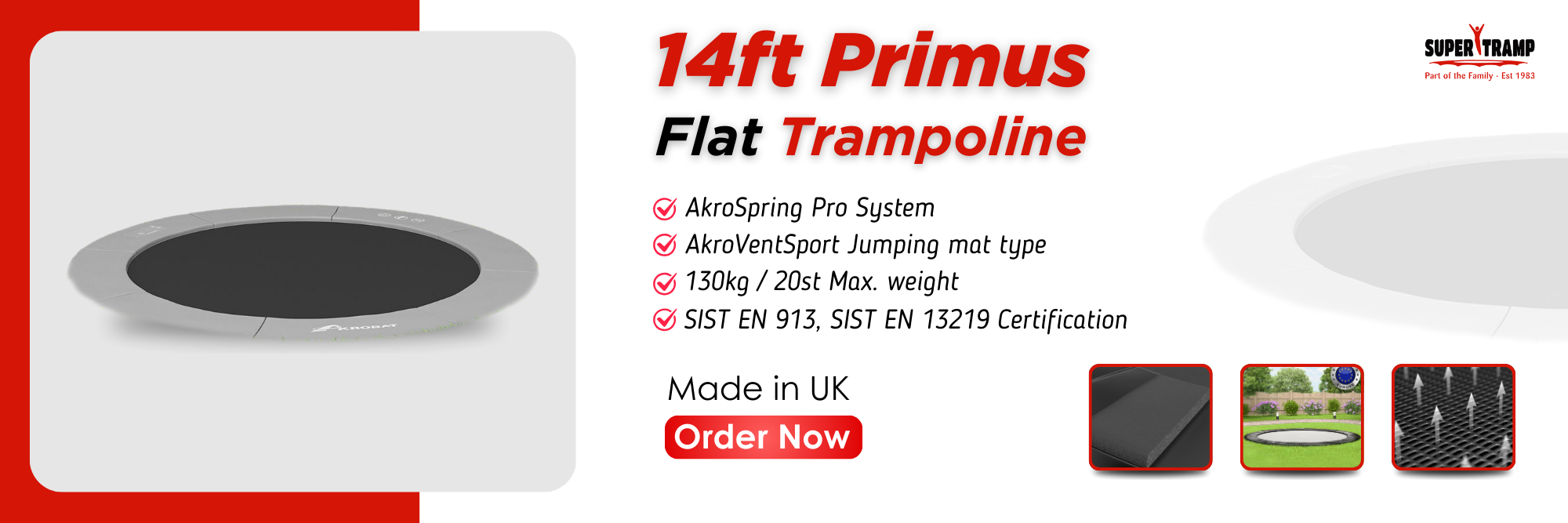
Trampolining has become an increasingly popular recreational activity and sport in the UK over the past few decades. While standard trampolines are great for casual bouncing in your back garden, performance trampolines are in a league of their own.
Table of Contents
ToggleA performance trampoline is designed for serious trampolinists, gymnasts and athletes. They feature a sturdier frame and more bounce, allowing jumpers to perform more complex manoeuvres like somersaults, twists and seat drops. The mat, springs and padding are also higher quality and specifically engineered to withstand intense training.
In this blog, you’ll know about the science behind a performance trampoline and what sets them apart.
Understanding Trampoline Physics

Have you ever wondered how trampolines work and what makes performance trampolines different? When you jump on a trampoline, the bed stretches downward under your weight, storing energy, and then propels you up into the air as the mat rebounds. The key is maximising this energy transfer for the highest jumps and softest landings.
Materials Matter
The material a trampoline is made of determines how much energy it can store and release. High-performance trampolines use sturdier, more flexible materials like polypropylene that can handle greater forces without breaking down. These materials also have a higher “springback” which means they release more of the energy put into them, resulting in bigger air and softer landings.
Size and Shape
A larger trampoline mat in a 14ft trampoline has more surface area so it can store more energy with each jump. However, a larger size also means the energy is distributed over a bigger area, so the bounce may feel less powerful. An oval-shaped mat concentrates the energy in the centre, resulting in a more powerful bounce. The trampoline frame, springs, and safety pads also need to be properly sized and rated to handle the forces generated by high-performance jumping.
Spring Power
The springs connect the mat to the frame and determine how much energy is stored and released with each jump. Longer, sturdier springs made of steel distribute energy more evenly and generate a higher, softer bounce. Performance trampolines may have up to twice as many springs as a standard recreational model, with the springs placed closer together for maximum power and control.
Components of Performance Trampolines

Performance Trampoline Springs
The springs on a performance trampoline are specifically engineered for competitive use. They are made of heavy-duty galvanised steel and securely attach the jumping mat to the frame, providing the lift and bounce that trampolinists need to execute complex aerial manoeuvres. Performance springs typically have a larger coil diameter and use a greater number of springs, often over 100, to generate more power and lift. This allows athletes to jump higher and do more flips before landing.
High-quality jumping beds
The trampoline bed of a performance trampoline is made of tightly woven, UV-resistant polypropylene mesh. It has a smooth, even surface that enhances lift and enables precise control of body positioning for complex tricks. High-quality beds are extremely durable yet maintain elasticity over years of use. They have strong, reinforced stitching around the edges and spring anchor points to withstand the forces generated by competitive jumping.
Frame construction
Performance trampolines have heavy-duty steel frames with welded joints for maximum strength and stability. Round frames, rather than square, provide the most even bounce across the bed. Sturdy legs anchor the frame to the ground to prevent shifting during use. Frame padding covers all hard edges for safety and is made of weather-resistant materials for outdoor use. A strong, stable frame is essential for the demands of competitive trampolining to ensure the safety, that’s why athletes are preferring a performance trampoline.
The advanced components of performance trampolines—specialised springs, competition-grade jumping beds and reinforced steel frames—are designed to meet the needs of trampoline athletes executing aerial skills at the highest levels of difficulty and complexity. When these elements are engineered to work together, they provide the lift, control and stability required for competitive trampolining.
Enhanced Safety Features

Safety enclosures and their impact on injury prevention Importance of padding and its effect on user safety Innovative safety features unique to performance trampolines Performance trampolines are designed with innovative features that make them safer than recreational models.
Safety Enclosures
Safety enclosures surround the trampoline mat and springs to prevent falls from the sides. They’re made of tightly woven netting that cushions impacts and prevents extremities from slipping through. The netting attaches directly to the trampoline frame for maximum stability.
Padding
Thick trampoline pads cover the springs, frame, and any hard edges. This high-density foam padding absorbs impact and prevents injuries from collisions into the frame or springs. The padding is securely attached to the trampoline so there are no gaps or tears exposing the hard surfaces underneath.
Other Safety Features
Some performance trampolines also have straps or handles attached to the safety enclosure for extra stability when jumping high or doing flips and twists. The mat itself is made of durable, non-slip material that provides superior grip and impact absorption. The springs are also designed for competitive use, providing a higher, more responsive bounce.
While recreational trampolines can still be enjoyed safely with proper precautions, performance trampolines offer an enhanced level of safety for high-level bouncing. Their innovative features give athletes the freedom to push their skills to the limit without fear of injury. With the right safety gear and training, performance trampolines open up a whole new world of aerial fun.
The additional safety features of performance trampolines provide peace of mind so you can focus on perfecting your skills. Their design and construction ensure many years of safe, high-flying enjoyment for athletes and families alike.
Design Innovations

Advancements in trampoline design aimed at improving performance Highlight any cutting-edge technologies used in performance trampolines. Performance trampolines incorporate cutting-edge technologies to provide elite bounce and enable complex aerial skills.
Sophisticated spring systems have been engineered for professional use. Conical springs, for example, are tapered to be more flexible at the top and stiffer at the bottom. This gives athletes more control and stability when bouncing high. Some brands use double or triple the number of springs for an even, powerful rebound across the whole mat.
Safety cages and nets prevent falls while still allowing maximum height. Curved poles and netting give more room for complex routines but still gently guide the athlete back to the centre. Some cages also have extra padding and strapping for added protection.
Reinforced frames provide a sturdy base for the extreme forces generated during competitive bouncing. Steel tubing, extra bracing and welded joints help prevent warping or breaking even under the impacts of double and triple somersaults.
While performance trampolines may incorporate some of the same materials as recreational ones, they are engineered and constructed specifically for high-level skills and training. Every component is optimised to produce a fast, high and controlled bounce—enabling athletes to push the limits of human ability and aerial achievement. With the latest technological and safety advancements built in, performance trampolines make the impossible suddenly possible.
User Experience and Performance

As an avid trampoline enthusiast, the experience and performance a round trampoline provides is everything. Performance trampolines are designed to cater to users of all skill levels, from recreational bouncers to competitive athletes.
For casual bouncers and families, performance trampolines offer a fun, low-impact way to get some exercise and enjoyment. Their durable, weather-resistant mats and safety pads create a stable, secure jumping surface for users of any age. The springs are also tightly coiled to provide plenty of lift and bounce without sacrificing safety.
For fitness enthusiasts and athletes, performance trampolines provide an effective training tool. Their responsive bounce allows for more advanced aerial manoeuvres, spins and flips. The taller frames, stronger springs and competition-grade mats are built to handle the impacts from complex jumps and routines. Some performance trampolines even have competition specs suitable for gymnastics training and events.
The benefits of performance trampolines are numerous. They provide an entertaining way to improve balance, coordination and cardiovascular health for recreational users. For athletes, they enable the practice and mastery of aerial skills that translate to enhanced performance in sports like gymnastics, diving, snowboarding and more. The low-impact, high-intensity nature of trampolining also reduces injury risk compared to many other training methods.
Whether you’re a casual bouncer, fitness buff or competitive athlete, performance trampolines offer customised experiences for users of every skill level. Their durable, high-quality components and responsiveness allow for both safe recreational enjoyment as well as effective athletic training and performance. If you’re looking for a fun new way to get in shape or enhance your aerial skills, a performance trampoline may be just the thing to propel you to new heights.
Conclusion
With their specialised designs and premium materials, performance trampolines provide that extra bounce and stability that can help you take your skills to the next level. Just remember that while performance trampolines can help maximise airtime and control, you’ve still got to put in the practice if you want to nail those sick tricks. Now get out there and start perfecting those backflips and layouts – the sky’s the limit on a performance trampoline!
FAQ's
What is the physics behind the trampoline?
Trampolines operate by converting kinetic energy into potential energy and vice versa. When a jumper lands on the mat, it stretches downward, storing energy. As the mat recoils, this stored energy is released, propelling the jumper into the air. The efficient bouncing mechanism is achieved through the use of materials such as polypropylene for the mat and steel for the springs, and the design of the trampoline components.
What sets performance trampolines apart from standard trampolines?
Performance trampolines are crafted for serious trampolinists, gymnasts, and athletes, boasting sturdier frames, higher quality materials, and increased bounce capability. They enable the execution of complex manoeuvres like somersaults and twists with ease.
How do materials impact the performance of a trampoline?
The materials used in performance trampolines, such as polypropylene for the mat and galvanised steel for the springs, are chosen for their ability to store and release energy efficiently. This results in higher jumps and softer landings, crucial for competitive trampolining.
What role does size and shape play in trampoline performance?
The size and shape of a trampoline impact its bounce characteristics. Larger round mats provide more surface area for energy storage, while oval-shaped mats concentrate energy in the centre for a more powerful bounce. Properly sized frames and springs ensure maximum power and control.
Why are safety features important in performance trampolines?
Performance trampolines are equipped with safety enclosures, thick padding, and other innovative features to prevent injuries during high-level bouncing. These features offer peace of mind, allowing athletes to focus on perfecting their skills without fear of accidents.
DON'T MISS...
- What is The Difference Between Consumer Trampolines and Commercial Trampolines?
- Trampoline Park Spares: Exploring The Latest Innovations and Future
- What is The Difference Between Consumer Trampolines and Commercial Trampolines?
- Safety Tips Every Parent Should Know About Playground Trampoline
- How to Replace Your Trampoline Spares: A Step-by-Step Guide




